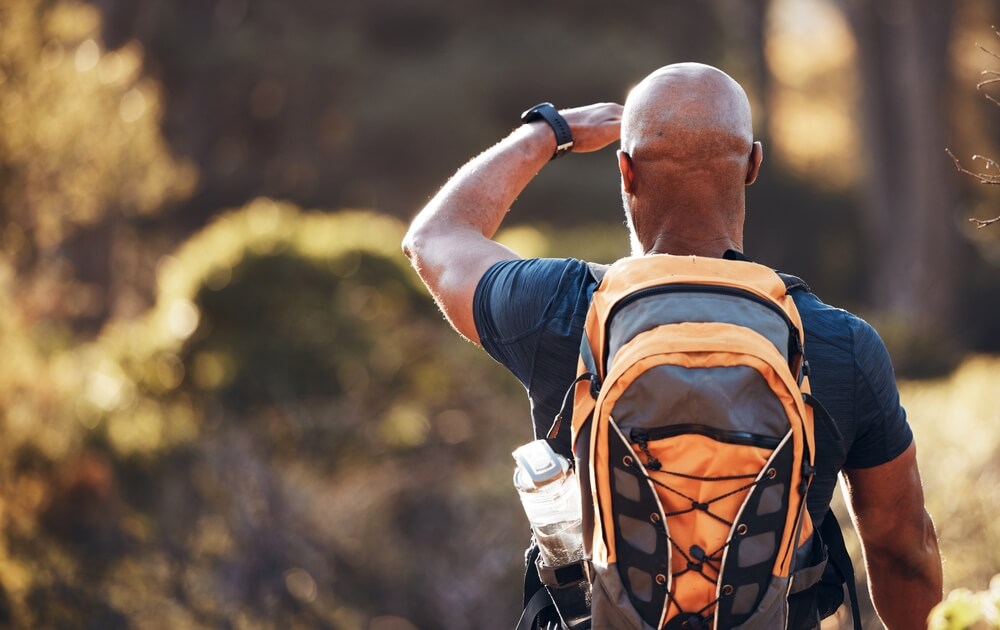If you are reading this then we assume you are interested in learning about the benefits of rucking and how to get started.
Rucking is an amazing activity with a ton of mental and physical benefits. While it may seem like something only for ex-military or Crossfit athletes, it is anything but. If you prefer walking over running or are seeking a workout that combines strength training and cardiovascular improvement, then maybe you should start rucking.
What is Rucking?
Rucking, is essentially just walking with a weighted backpack. Originating from military training where soldiers carry heavy packs across distances, rucking has found its way into mainstream fitness as a comprehensive workout that works your cardiovascular system and a ton of muscle. It's as straightforward as it sounds, but the impact it can have on your health and fitness is profound.
The Benefits of Rucking
1. Improved Cardiovascular Health: Rucking elevates your heart rate, making it an excellent form of cardiovascular exercise. Unlike running, which can be hard on your joints, rucking provides a lower-impact alternative that still boosts heart health.
2. Enhanced Strength: Carrying additional weight naturally increases the intensity of the workout, engaging your muscles more than regular walking. It targets your shoulders, back, abs, and legs, promoting muscle endurance and strength. It can also blow up your traps.
3. Weight Loss and Fat Burning: Rucking burns more calories than walking alone due to the added weight. It's an effective way to create a caloric deficit, leading to weight loss and improved body composition. Even just a couple miles of rucking can burn hundreds of calories.
4. Mental Health Benefits: Like other forms of exercise, rucking releases endorphins, reducing stress and anxiety. The outdoor aspect of rucking also contributes to mental well-being, offering a break from the indoor, screen-heavy environment many of us are used to. It's just you, your pack, and your thoughts.
5. Accessibility, Cost, and Community: Rucking requires minimal equipment or money, and can be done anywhere you can walk. Additionally, the rucking community is growing, offering a sense of camaraderie and support as you embark on your fitness journey. Click here to find rucking clubs near you.
Getting Started with Rucking
Choose the Right Gear: All you need is a sturdy backpack and some weight. Start with around 10-15% of your body weight and adjust as needed. Ensure the pack fits comfortably and the weight is securely positioned. You do this by wrapping a dumbbell in a towel, placing weight plates in your pack, or by filling a bag with sand.
After experimenting with a few rucks, you can find a whole bunch of advanced bags and weight systems online that are more likely to hold up to the abuse.
Select Your Route: Start with a familiar route. Plan for distance rather than time initially, with a manageable distance that challenges you without overdoing it. You do not have to go to the mountains either. Just walk out your front door and go.
If the weather is bad you can ruck while also walking on a treadmill.
Pace Yourself: Begin at a comfortable pace where you can maintain good form. As you get stronger, you can increase your pace or the weight in your pack. Walking up hill is also something that you should adjust to over time.
Stay Hydrated and Listen to Your Body: Carry water and take breaks as needed. Listening to your body is crucial to prevent overexertion and injury. Rucking can be exhausting.
You may even find that your back muscles get really sore until they get used to the new load being placed on them. Rest often between ruck sessions. Especially if you are over 40.
Rucking presents a unique opportunity to enhance your fitness in a simple, effective manner. Whether you're looking to improve your strength and endurance, lose weight, or just enjoy the mental health benefits of being outdoors, rucking covers all bases.
So, grab an old backpack, toss some weight in, and get ruckin.






